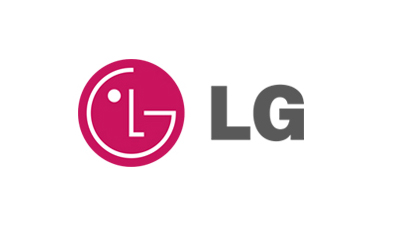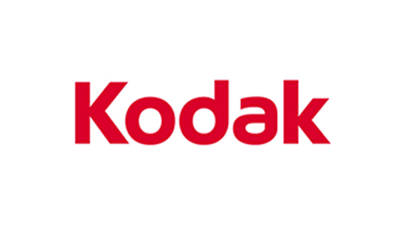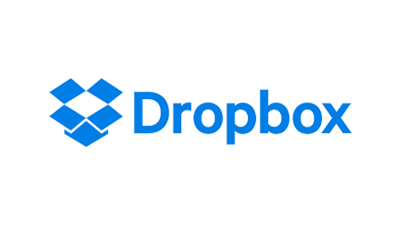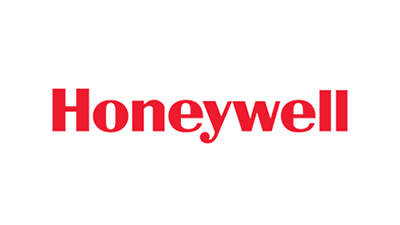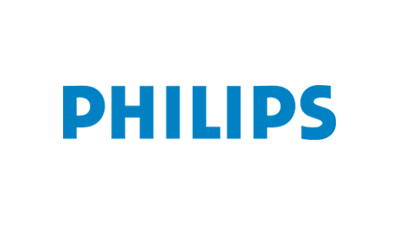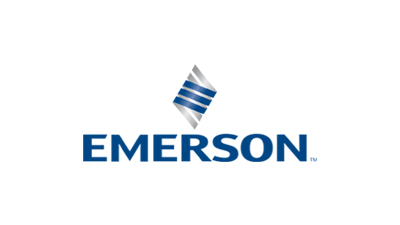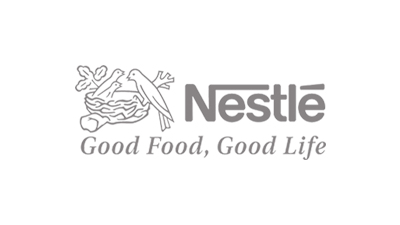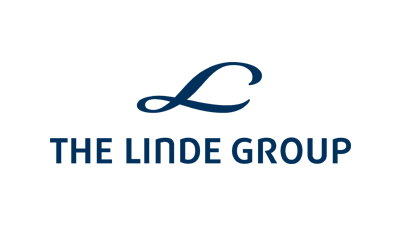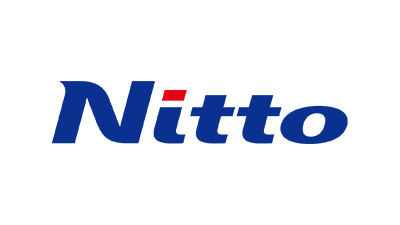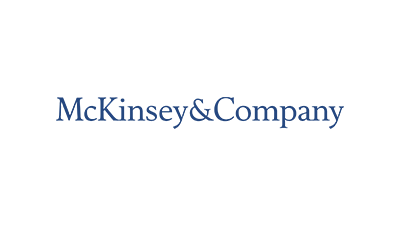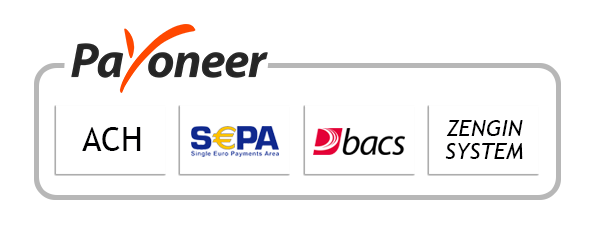
-
Report ID 140878 -
Published Date March 2025 -
Delivery Format PDF/PPT/Word -
Editor's Rating
-
Report Details
Report Overview
The Next-generation Sequencing Data Analysis Market size is expected to be worth around USD 50 Bn By 2034, from USD 11.24 Bn in 2024, growing at a CAGR of 16.10% during the forecast period from 2025 to 2034. In 2024, North America held over 45% of the global NGS Data Analysis Market. The U.S. market was valued at USD 4.7 bn and is expected to grow at a CAGR of 13.7% in the coming years.
Next-generation sequencing (NGS) data analysis involves a sophisticated suite of bioinformatics processes to interpret vast amounts of DNA and RNA sequence data generated by advanced sequencing technologies. This analysis is crucial for understanding complex genetic information, which can lead to significant advances in fields such as medicine, agriculture, and biology.
The process includes quality control of sequencing reads, alignment to reference genomes, and identification of genetic variants and expressions. Each type of NGS application, such as RNA-seq, genotyping, or metagenomics, requires specific analytical approaches to address unique scientific questions.
The growth of the NGS data analysis market is driven by several key factors. The increasing use of NGS in clinical diagnostics fuels demand for advanced data analysis tools, especially with the rise of precision medicine. Additionally, technological advancements in sequencing platforms and the decreasing cost of sequencing have made genomic studies more accessible and widely applicable.

Additionally, the surge in genomic data has necessitated robust solutions for data management and interpretation, further propelling the market growth. Increasing investments in genomics and personalized medicine by governments and private entities worldwide continue to fuel the expansion of this market.
The NGS data analysis market is growing, driven by the shift towards data-driven decision-making in life sciences. Easier sequencing has expanded its applications across oncology, infectious diseases, agriculture, and environmental genomics. Increased awareness of NGS’s potential to offer deeper biological insights supports this growth.
Opportunities in the NGS data analysis market include developing user-friendly, integrated platforms that manage growing data complexity with precision. There is also rising demand for scalable, cloud-based solutions and solutions that integrate NGS data with other health data to create comprehensive patient profiles, driven by the evolution of personalized medicine.
The expansion of the NGS data analysis market is likely to continue at a brisk pace, driven by technological advancements and the increasing affordability of NGS workflows. Expanding NGS access in emerging economies offers significant growth potential. Market expansion will also be driven by governmental funding for genomics projects and collaborations between academia, biotech, and pharma to apply NGS in new therapeutic and diagnostic areas.
Key Takeaways
- The Global Next-generation Sequencing Data Analysis Market size is expected to reach USD 50 Billion by 2034, up from USD 11.24 Billion in 2024, growing at a CAGR of 16.10% during the forecast period from 2025 to 2034.
- In 2024, the Software segment held a dominant market position in the Next-generation Sequencing (NGS) Data Analysis Market, capturing more than 56% of the market share.
- The in-house segment held a dominant position within the Next-generation Sequencing Data Analysis Market in 2024, capturing more than 65.1% of the market share.
- In 2024, the Clinical Diagnostics segment held a dominant market share in the NGS Data Analysis Market, capturing more than 40% of the market.
- The Whole Genome Sequencing (WGS) segment also held a dominant position within the Next-generation Sequencing Data Analysis Market in 2024, with a market share of more than 38%.
- North America held a dominant market position in the Next-generation Sequencing (NGS) Data Analysis Market in 2024, capturing more than 45% of the global market share.
- The market for Next-generation Sequencing (NGS) Data Analysis in the United States was valued at USD 4.7 billion in 2024 and is projected to grow at a CAGR of 13.7% in the coming years.
U.S. Market Growth
In 2024, the market for Next-generation Sequencing (NGS) Data Analysis in the United States was valued at USD 4.7 billion. It is projected to grow at a compound annual growth rate (CAGR) of 13.7% over the following years.
This significant growth can be attributed to several key factors, including advancements in NGS technologies, increased adoption of NGS in clinical diagnostics, and the expanding applications in oncology and genomics research. The surge in genomic data output necessitates enhanced data analysis solutions, which drives demand for sophisticated NGS data analysis tools and services.
Strategic collaborations and funding for genomics projects are driving sector growth. Cloud-based NGS data analysis solutions are gaining popularity among research institutions and biopharmaceutical companies, enabling faster and more efficient data processing. These technological innovations, along with the expansion of genomic medicine, are expected to fuel robust growth in the U.S. NGS data analysis market.

In 2024, North America held a dominant market position in the Next-generation Sequencing (NGS) Data Analysis Market, capturing more than a 45% share. The region’s market revenue was estimated at USD 5 billion, driven by a robust technological infrastructure and a strong presence of leading genomic research institutions and biotechnology firms.
The prominence of North America in this market can also be attributed to several strategic factors. Firstly, the U.S. government and private sector funding for genomics research are significant, with initiatives such as the Precision Medicine Initiative and the Cancer Moonshot fostering a conducive environment for market growth.
Furthermore, North America benefits from having a highly developed healthcare infrastructure, which integrates next-generation sequencing in clinical settings more effectively than in many other regions.This integration is driven by strong collaborations between academic institutions, healthcare providers, and commercial enterprises, enabling the rapid deployment of new technologies in personalized medicine.
Technological innovation in North America, home to leading NGS and bioinformatics companies like Illumina, Thermo Fisher Scientific, and QIAGEN, drives market growth. Continuous R&D improves NGS accuracy and efficiency, while advancements in cloud computing and AI enhance data processing, enabling faster and more precise genetic analysis.

Component Analysis
In 2024, the Software segment held a dominant position in the Next-generation Sequencing (NGS) Data Analysis Market, capturing more than a 56% share. Software plays a critical role in NGS workflows by enabling accurate analysis of complex genomic data.
The Software segment’s leadership is also driven by continuous advancements in bioinformatics. As sequencing technologies evolve, software solutions are developed to handle growing data volumes and complexity, improving the accuracy and speed of analysis, and becoming essential for genomic research.
The growing adoption of cloud-based solutions in genomics has accelerated the software segment’s growth. Cloud platforms provide scalable and flexible resources, crucial for managing large sequencing data, thus driving the preference for software-based solutions in NGS data analysis.
Regulatory and compliance requirements in clinical NGS use drive the need for advanced software solutions. Software that ensures data privacy and clinical standards compliance is essential for diagnostics and personalized medicine, making the development of secure, user-friendly, and robust software a key priority in the market.
Mode Analysis
In 2024, the in-house segment held a dominant market position within the next-generation sequencing data analysis market, capturing more than a 65.1% share.
This leading stance can be attributed to several key factors that favor the in-house management of NGS data analysis over outsourced solutions. Firstly, in-house analysis allows for greater control over data security and confidentiality, which is critical in fields dealing with sensitive genetic information.
In-house NGS data analysis allows organizations to directly oversee analytical processes and data quality, enabling quick troubleshooting and adaptation. This is crucial for research and clinical applications. Custom-tailored systems also improve operational efficiency and the effectiveness of sequencing outputs, aligning with specific needs and workflows.
The preference for in-house NGS data analysis is strengthened by advanced bioinformatics tools that handle large datasets, supporting precision medicine and research. In-house teams of bioinformaticians and IT professionals enable institutions to stay ahead of technological advancements, offering greater flexibility than relying on external vendors.

Application Analysis
In 2024, the Clinical Diagnostics segment held a dominant market position in the Next-generation Sequencing (NGS) Data Analysis Market, capturing more than a 40% share. This leading position is primarily due to the increasing application of NGS technologies in the diagnosis of complex genetic disorders, infectious diseases, and various types of cancer.
The expansion of precision medicine initiatives across healthcare systems has further bolstered the Clinical Diagnostics segment. Precision medicine relies on the analysis of individual genetic profiles to tailor treatment strategies, necessitating extensive use of NGS for genomic sequencing.
Regulatory approvals for NGS-based clinical tests have surged, driving market growth. The FDA’s approval of several NGS-based diagnostic tests, vital for early disease detection and management, boosts the credibility of NGS technologies and fosters broader adoption in clinical practice.
Advancements in bioinformatics and user-friendly software are key to the dominance of the Clinical Diagnostics segment. These innovations simplify the complexity of NGS data, making it more accessible for clinical use. As bioinformatics solutions improve, clinicians can interpret genomic data more quickly and accurately, driving sustained growth in this market segment.
Technology Analysis
In 2024, the Whole Genome Sequencing (WGS) segment held a dominant position within the next-generation sequencing data analysis market, capturing more than a 38% share. This leadership can be attributed to the comprehensive nature of WGS, which allows for the analysis of the entire genome, providing a complete set of genetic information.
Technological advancements have strengthened the WGS segment by reducing costs and increasing sequencing speed, making it more accessible for diverse applications. These improvements have expanded its use in clinical diagnostics and large-scale genomics projects, driving growth and reinforcing WGS’s leading market position.
Furthermore, the integration of artificial intelligence and machine learning in WGS data analysis has optimized the interpretation of vast amounts of genomic data, enhancing the accuracy and efficiency of genetic analysis. These technological integrations have enabled healthcare providers to better predict, diagnose, and treat genetic disorders, increasing the reliability and demand for WGS.
Regulatory and governmental support for genomic projects has boosted the WGS segment’s dominance. Funding for research, along with guidelines promoting genomic use in medicine, has accelerated whole genome sequencing adoption. These initiatives, coupled with increased awareness of genomics’ potential in disease prevention, reinforce WGS’s leadership in the next-generation sequencing market.
Key Market Segments
By Component
- Software
- Services
By Mode
- In-house
- Outsourced
By Application
- Clinical Diagnostics
- Drug Discovery & Development
- Research & Academic Institutions
- Agriculture & Animal Genomics
- Other Applications
By Technology
- Whole Genome Sequencing (WGS)
- Targeted Sequencing
- RNA Sequencing
- Exome Sequencing
- Others
Key Regions and Countries
- North America
- US
- Canada
- Europe
- Germany
- France
- The UK
- Spain
- Italy
- Rest of Europe
- Asia Pacific
- China
- Japan
- South Korea
- India
- Australia
- Singapore
- Rest of Asia Pacific
- Latin America
- Brazil
- Mexico
- Rest of Latin America
- Middle East & Africa
- South Africa
- Saudi Arabia
- UAE
- Rest of MEA
Driver
Advancements in Precision Medicine
The advent of next-generation sequencing (NGS) technologies has significantly propelled the field of precision medicine. By enabling comprehensive analysis of individual genetic profiles, NGS facilitates tailored strategies that align with a patient’s unique genetic makeup. This personalized approach enhances treatment efficacy and minimizes adverse effects.
For instance, in oncology, NGS-based diagnostics can identify specific mutations within tumors, allowing clinicians to select targeted therapies that directly address the molecular underpinnings of a patient’s cancer. Such precision not only improves patient outcomes but also optimizes healthcare resources by avoiding ineffective treatments. The integration of NGS into clinical practice exemplifies a paradigm shift towards individualized care, underscoring its role as a pivotal driver in modern healthcare.
Restraint
Data Analysis Challenges
Despite the transformative potential of NGS, the analysis of the vast data it generates presents significant challenges. The sheer volume of sequencing data requires robust computational infrastructure and sophisticated bioinformatics tools to accurately interpret genetic variations.
Moreover, distinguishing clinically relevant mutations from benign variants necessitates comprehensive databases and advanced algorithms. The complexity of data analysis can lead to delays in diagnosis and increased costs, potentially hindering the widespread adoption of NGS in routine clinical settings. Addressing these challenges is crucial to fully harness the benefits of NGS in precision medicine.
Opportunity
Integration of Multi-Omics Data
The convergence of NGS with other high-throughput technologies offers a unique opportunity to enhance our understanding of complex diseases. By integrating genomics with transcriptomics, proteomics, and metabolomics data, researchers can construct comprehensive models of disease mechanisms.
This multi-omics approach facilitates the identification of novel biomarkers and therapeutic targets, paving the way for more precise diagnostics and personalized treatments. For example, combining genomic and transcriptomic data can reveal how genetic variants influence gene expression patterns, providing deeper insights into disease pathology. Embracing this integrative strategy holds promise for advancing precision medicine.
Challenge
Ethical and Data Privacy Concerns
The utilization of NGS in clinical practice raises important ethical considerations, particularly regarding data privacy and consent. The comprehensive nature of genomic data means that individuals’ genetic information could potentially be misused if not properly safeguarded.
Ensuring that patients are fully informed about how their genetic data will be used, stored, and shared is essential. Developing robust policies and frameworks to protect patient confidentiality while promoting the beneficial use of genomic data remains a significant challenge in the implementation of NGS-based diagnostics. Policies should clearly define who can access genetic data (e.g., clinicians, researchers) and under what circumstances it can be shared with external parties, while maintaining patient privacy and control.
Emerging Trends
A prominent trend is the integration of single-cell multi-omics data, which combines various molecular profiles from individual cells to provide a comprehensive understanding of cellular functions. This approach facilitates the discovery of intricate inter-omics relationships and enhances the robustness of experimental findings.
Another notable development is the adoption of alignment-free sequence analysis methods. These techniques, which do not rely on traditional sequence alignment, are particularly useful for analyzing large-scale NGS data. They have applications in areas such as metagenomics and molecular phylogenetics, offering efficient alternatives for sequence comparison and classification tasks.
Hybrid genome assembly approaches have also emerged, combining short and long sequencing reads to improve the accuracy and completeness of genome assemblies. This strategy leverages the high accuracy of short reads and the extensive coverage of long reads, resulting in more reliable genomic reconstructions.
Business Benefits
Advancements in NGS data analysis provide significant advantages to businesses, especially in biotechnology and pharmaceuticals. The integration of AI with genomic data speeds up drug discovery by quickly identifying therapeutic targets, reducing research timelines, cutting costs, and enabling faster drug development.
Companies specializing in genetic testing, such as GeneDx, have experienced remarkable growth by focusing on NGS data analysis. By providing comprehensive genomic testing services, they assist in diagnosing genetic diseases, leading to early interventions and improved patient outcomes.
Collaborations to build extensive genetic databases exemplify the business potential of NGS data analysis. For instance, partnerships involving companies like Regeneron Pharmaceuticals and Illumina aim to create vast genomic datasets, facilitating the development of personalized medicines and targeted therapies. These initiatives not only enhance patient care but also open new revenue streams through data-driven product development.
Key Player Analysis
- Thermo Fisher Scientific, Inc. is a global leader in providing comprehensive NGS solutions. The company offers a wide range of sequencing platforms, reagents, and analysis tools designed to improve efficiency and accuracy in genomic research. Thermo Fisher’s software solutions, like the Ion Torrent platform and Ion GeneStudio S5, assist researchers in high-throughput sequencing and analyzing complex genomic data efficiently.
- QIAGEN is a prominent player in the NGS data analysis market, known for its robust bioinformatics tools and reagents. The company provides a broad portfolio of solutions for sample preparation, sequencing, and data analysis, making it easier for researchers to extract valuable insights from genomic data.
- Agilent Technologies Inc. is another key player in the NGS data analysis market. The company offers advanced sequencing and analysis solutions, including its SureSelect and HaloPlex platforms, designed to optimize NGS workflows. Agilent’s bioinformatics software solutions are tailored to support next-generation sequencing analysis, enabling precise data interpretation and decision-making.
Top Key Players in the Market
- Thermo Fisher Scientific, Inc.
- QIAGEN
- Agilent Technologies Inc.
- Bio-Rad Laboratories, Inc.
- Pacific Biosciences of California, Inc.
- Eurofins Scientific
- Partek Incorporated
- Hoffmann-La Roche Ltd.
- Illumina, Inc.
- DNASTAR, Inc.
- Macrogen Inc.
- Other Key Players
Top Opportunities Awaiting for Players
The next-generation sequencing (NGS) data analysis market is poised for substantial growth, driven by several key factors that represent significant opportunities for market players.
- Rising Prevalence of Cancer: The increasing number of cancer cases globally is a major driver for the NGS data analysis market. NGS technologies facilitate the precise identification of genetic mutations, which is crucial for developing personalized cancer therapies.
- Advancements in Bioinformatics Software: There is a growing focus on the development of advanced bioinformatics software, which aids in the faster and more accurate analysis of genetic data. This not only enhances research and clinical applications but also supports the growth of the NGS market by improving the efficiency of genetic data processing.
- Demand for Personalized Medicine: The demand for personalized medicine is escalating, driven by the need to tailor medical treatments to individual genetic profiles. NGS is foundational in this area, enabling detailed assessments of genetic variations that inform personalized treatment strategies.
- Technological Innovations and Reductions in Cost: Continuous technological advancements in NGS platforms are making these technologies more accessible and cost-effective. Innovations that increase the speed and accuracy of sequencing, as well as the reduction in overall costs, are expected to further drive market growth.
- Global Expansion and Strategic Partnerships: There is a significant opportunity for NGS data analysis companies to expand their global reach through strategic partnerships and collaborations. These alliances can help companies access new markets and enhance their technological capabilities, thereby boosting their market presence and profitability.
Recent Developments
- In 2024, Complete Genomics has expanded its U.S. manufacturing capabilities, enhancing technology to diversify its supply chain. This move ensures the company continues to deliver reliable, flexible, and cost-effective next-generation sequencing (NGS) solutions to customers.
- In December 2024, Singular Genomics entered into an agreement to be acquired by an affiliate of Deerfield Management Company, L.P., in transaction valued at $20.00 per share.
Report Scope
Report Features Description Market Value (2024) USD 11.24 Bn Forecast Revenue (2034) USD 50 Bn CAGR (2025-2034) 16.10% Base Year for Estimation 2024 Historic Period 2020-2023 Forecast Period 2025-2034 Report Coverage Revenue Forecast, Market Dynamics, COVID-19 Impact, Competitive Landscape, Recent Developments Segments Covered By Component (Software, Services), By Mode (In-house, Outsourced), By Application (Clinical Diagnostics, Drug Discovery & Development, Research & Academic Institutions, Agriculture & Animal Genomics, Other Applications), By Technology (Whole Genome Sequencing (WGS), Targeted Sequencing, RNA Sequencing, Exome Sequencing, Others) Regional Analysis North America – US, Canada; Europe – Germany, France, The UK, Spain, Italy, Russia, Netherlands, Rest of Europe; Asia Pacific – China, Japan, South Korea, India, New Zealand, Singapore, Thailand, Vietnam, Rest of APAC; Latin America – Brazil, Mexico, Rest of Latin America; Middle East & Africa – South Africa, Saudi Arabia, UAE, Rest of MEA Competitive Landscape Thermo Fisher Scientific, Inc., QIAGEN, Agilent Technologies Inc., Bio-Rad Laboratories, Inc., Pacific Biosciences of California, Inc., Eurofins Scientific, Partek Incorporated, Hoffmann-La Roche Ltd., Illumina, Inc., DNASTAR, Inc., Macrogen Inc., Other Key Players Customization Scope Customization for segments, region/country-level will be provided. Moreover, additional customization can be done based on the requirements. Purchase Options We have three license to opt for: Single User License, Multi-User License (Up to 5 Users), Corporate Use License (Unlimited User and Printable PDF) -
Table Of Content
Research Insights & Deliverables
 Development and Future Forecast
Development and Future Forecast Competitive benchmarking
Competitive benchmarking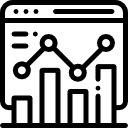 Company Revenue Statistics
Company Revenue Statistics Rising Regional Opportunities
Rising Regional Opportunities Technology Trends and Dynamics
Technology Trends and Dynamics Technology Assessment
Technology Assessment
-
Inquiry Before Buying
Research Insights & Deliverables
 Development and Future Forecast
Development and Future Forecast Competitive benchmarking
Competitive benchmarking Company Revenue Statistics
Company Revenue Statistics Rising Regional Opportunities
Rising Regional Opportunities Technology Trends and Dynamics
Technology Trends and Dynamics Technology Assessment
Technology Assessment
-
Request Sample
Research Insights & Deliverables
 Development and Future Forecast
Development and Future Forecast Competitive benchmarking
Competitive benchmarking Company Revenue Statistics
Company Revenue Statistics Rising Regional Opportunities
Rising Regional Opportunities Technology Trends and Dynamics
Technology Trends and Dynamics Technology Assessment
Technology Assessment
